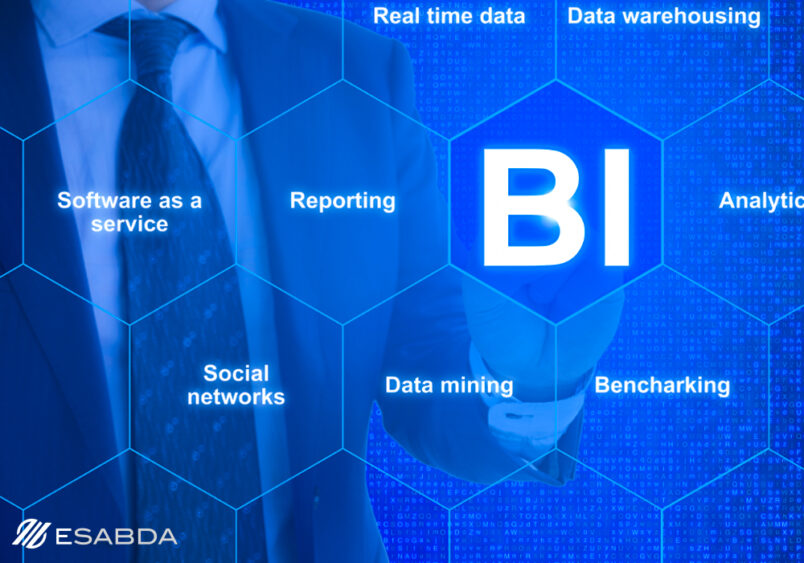By Jessica
Business Intelligence is made out of two words, business, and intelligence. It is not hard to depict what business intelligence means given that the words themselves explain the meaning of it. However, it is a thing to think of when it comes to deeply knowing what business intelligence really means. In this article, you will surely learn what is business intelligence and why business intelligence is called business intelligence.
Origin of business intelligence
The term business intelligence originated in 1865 by Richard Millar Devens in the Cyclopædia of Commercial and Business Anecdotes. Business intelligence is also termed BI. Richard Millar Devens coined this phrase in order to describe how Sir Henry Furness, a banker, profited from just the information he managed to extract before his competitors.
Business Intelligence is in fact one of the most important concepts that one must be well aware of if he wants to learn about business tactics the right way. Ever since it’s origin, many professionals have been using the term and making use of the concept in order to succeed in their business ventures against their competitors.
Many business professionals have been using the term Business Intelligence as well as using the concept of BI to excel in their business against their competitors.
What is Business Intelligence (BI)
Business Intelligence really is not a complicated concept. It takes professionals to combine business analytics, data mining, data visualization, data tools and infrastructure, and best practices for organizations to make data-driven decisions. The data-driven decision that comes as a conclusion of the whole process is in fact what explains Business Intelligence.
The entire concept of Business Intelligence (BI) revolves around making the best possible business decision. Business Intelligence is of two types, modern business intelligence, and traditional business intelligence. Modern business intelligence is more dependent on speed to insight, controlled data on reliable platforms, empowered business users, and flexible self-service analysis. Likewise, Traditional business intelligence, complete with capital letters, first appeared as a method of information.
It is important for you to understand that businesses require goals and also have many questions to raise. BI mostly helps organizations and businesses in gathering relevant data, analyzing it, and deciding which steps to take to attain their goals by providing answers to these questions and monitoring performance against these goals.
Methods for Business Intelligence
Business Intelligence helps businesses grow and make more profit by making the best possible decision that fits the goals of the organization perfectly. There are several methods involved in business intelligence. These methods have been elaborated on below:
Data mining:
Data mining is the process of identifying patterns and extracting information from big data sets using techniques that combine machine learning, statistics, and database systems. In short, it is the best way to uncover trends in large data settings.
Performance metrics and benchmarking:
Performance metrics are useful in measuring and outlining a business’s performance. Likewise, Benchmarking is a strategy used by businesses to promote continuous improvement through the use of best practices. This can boost productivity and gain a competitive advantage.
Reporting:
In businesses, it becomes important to share data with the shareholders. This is when reporting plays the role of sharing the data analysis to draw conclusions and make the best decisions for the organization.
Statistical analysis:
The statistical analysis becomes important in a business in order to collect, explore, and present a large amount of data. It helps to analyze the trends and gives answers to questions like how the trends happen and why.
Querying:
Querying refers to asking data-specific questions. It plays a vital role in answering the most important questions for the business. BI makes sure to find suitable answers from the data sets.
Descriptive analytics:
Preliminary data analysis can help us find exactly what happened. It is always easier to learn about history, trends, and relationships with the help of descriptive analytics. Descriptive analytics is also known as the simplest form of data analysis.
Data visualization:
Data visualization refers to visually representing data analysis into graphs, tables, charts, and histograms for easier data consumption.
Visual data analysis:
A technique for comprehending art called visual analysis concentrates on the visual components of an artwork, such as color, line, texture, and scale.
Data preparation:
This is one of the most crucial parts of data analysis. Data analysis requires data preparation. Hence, it is important to prepare raw data for in-depth processing and analysis.
Why do businesses need Business Intelligence?

Business Intelligence or BI uses several tools in order to learn about the trends and the processings of how things are around the business. There are many reasons why a business is likely to earn an impressive amount of profit with the help of BI. One of the top reasons would be that business intelligence is capable of gaining customer insights. BI tools are very smart and can be used in order to analyze business patterns and create user profiles.
Moreover, business operations become more visible. Having proper visibility can help businesses in rectifying the errors that may have been happening. It is always easier for a seller or a business to know what is causing the increase in the “cart abandonment rate” among potential customers with the help of business intelligence. Reduction in cart abandonment rate is likely to increase sales as well as the profits of the organization.
Increasing efficiency inside the organization is not even an issue with the help of Business Intelligence tools. The organization’s productivity is increased and waiting times for report requests are decreased by making relevant data accessible to all teams within the organization. Similarly, getting the data in real-time is never a problem with the help of modern BI tools.
In a broader sense, we can see that businesses are making stronger marketing efforts and gaining a competitive edge over rivals. Today, it has become crucial to operate a business alongside modern BI tools. In this competitive time, no business can run successfully alongside its equally strong competitors if the business is not realizing what is trending in the market and how fast-paced the market is.
For the firm to have a competitive advantage in this day and age, it is crucial to emphasize the value of BI.
BI Trends
In order to learn about the business intelligence trends, it becomes important to know that there are many people working combinedly in order to make the BI tools work. Business intelligence teams, led by BI managers, typically have a mix of BI analysts, BI developers, BI architects, and BI specialists. These experts collaborate closely with data architects, data engineers, and other experts in data management.
In order to address this, an increasing number of businesses are transitioning from traditional waterfall development to Agile BI and data warehousing approaches, which use Agile software development techniques to divide BI projects into manageable pieces and deliver new functionality incrementally and iteratively.
What are the business Intelligence tools?
Business intelligence tools help businesses to make decisions in order to cater to the present trends and customers’ tastes. But what exactly are these marketing tools? Here are some of the most common BI tools that are briefly explained below:
- Ad hoc analytics:
Ad Hoc analysis is employed in business intelligence to provide a clear response as needed, or as considered necessary. - Online analytical processing (OLAP):
An approach of computing that allows multidimensional analytical queries - Mobile BI:
This refers to software that optimizes the desktop level of intelligence for mobile devices. - Real-time BI:
An enterprise analytics method that integrates business transactions into a real-time data warehouse to just provide users with real-time information. - Software-as-a-service BI (SaaS BI):
BI tools are hosted in a secure online environment by a third-party supplier using SaaS. - Collaborative BI:
Collaborative BI refers to merging business intelligence software with collaboration tools like social and Web 2.0 technologies. - Location intelligence (LI):
LI refers to the methodology of drawing conclusions from location data to address spatial issues. - Data visualization software:
Data visualization software provides visual context to make pattern and correlation identification easier.
Types of Business Intelligence Users
There are four different types of business intelligence users. They include:
- IT Users
Business Intelligence helps in making better business decisions by storing, analyzing, and displaying data. Moreover, business intelligence and information technology both deal with information management and data. - The Professional Data Analyst
Professional data analysts make sure to use Business Intelligence in using their quantitative skills to help the business improve and thrive. BI always supports the data analysts in finding the data analysts get fresh insight. - The Head Of The Company
Improving the efficiency of the business will definitely help the CEO or the owner of the company to generate as much profit as they possibly can. Almost all CEOs and business owners view BI as a critical element of their operations. - The Business Users
The power user is capable of working with complex data sets while the usage of dashboards to assess specified pieces of data is driven by casual user needs.
Conclusion
Business intelligence is widely used in every part of the world as of now in almost every field possible. Specializing mostly in the field of business, making it easy for people to find the right solution for almost every problem when it comes to profit-making. In a real-life scenario, BI can be used in fields like finance, government, technology, education, retail and consumer goods, healthcare, manufacturing, and many others fields.
Read More: What is GTE Technology & Best Ways to Invest in GTE




